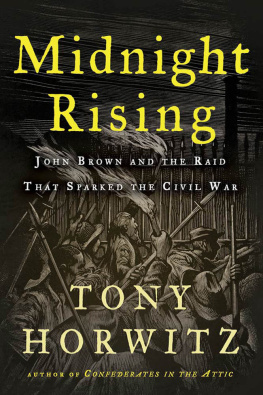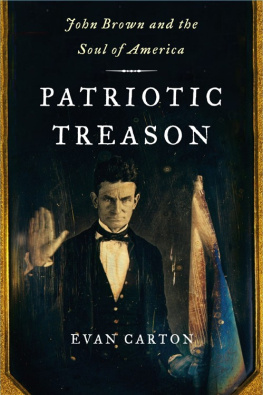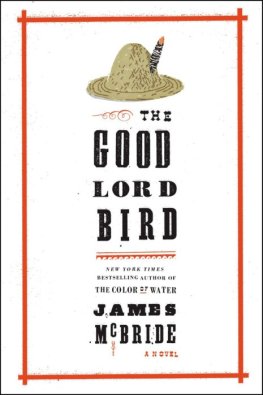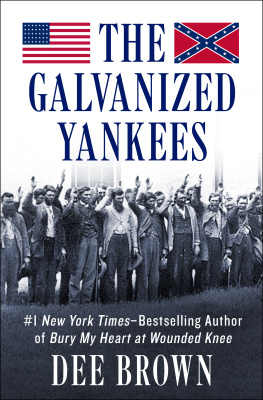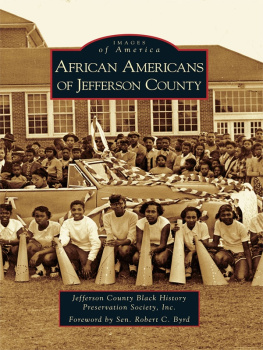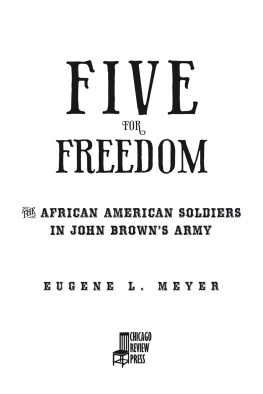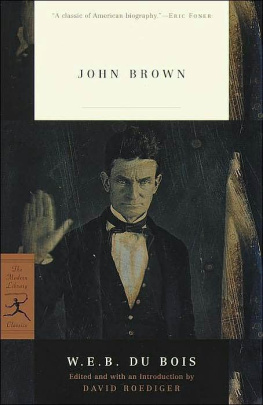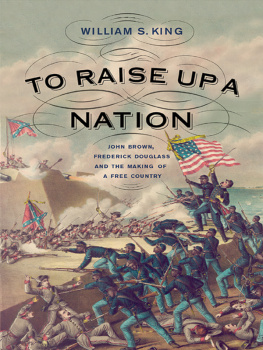Midnight Rising is a departure from my previous books, which weaved between past and present. This one stays firmly rooted in the nineteenth century. As a result, I owe a special debt to historians and librarians who eased my passage from ink-stained journalist to pencil-smudged archival rat.
Thanks first to David Blight, the director of the Gilder Lehrman Center for the Study of Slavery, Resistance, and Abolition. Three years ago he urged me to pursue this project, despite my lack of expertise, and introduced me to Blake Gilpin, a young historian who has inspired me throughout. Blake is about to publish his first book, John Brown Still Lives! , a pioneering study of the memory and myth-making of Brown from the 1850s to the present.
Through David and Blake, I entered the wider world of Browniacs, a dedicated community of academics, independent scholars, and others who share a passion for the abolitionists story. Louis DeCaro, the author of Fire from the Midst of You, has been very generous in sharing his sources and insights, as he also does at http://abolitionist-john-brown.blogspot.com/ . Bonnie Laughlin-Schultz has been another invaluable resource, particularly on Annie Brown Adams, my favorite figure in the Harpers Ferry drama. Bonnies upcoming book on the Brown women and abolitionism will greatly expand the male-centered universe of Brown scholarship.
The story of the black raiders at Harpers Ferry also remains to be fully told, and Philip Schwarzs work is a model in this regard. Through painstaking research over many years, he has pieced together the extraordinary life of Dangerfield Newby, who hoped to free his wife and children from slavery. Like Bonnie, Phil has been extraordinarily generous, calmly booting up his computer database to answer my every query.
Jonathan Earle and Karl Gridley were kind enough to guide me through the Kansas mud to Pottawatomie Creek, Black Jack, and Osawatomie. Jonathan also shared his vast knowledge of antebellum politics, the subject of his upcoming book, The Election of Abraham Lincoln and the Revolution of 1860. Among the other scholars I consulted, Id like to thank Richard Blackett, Evan Carton, William Cooper, Caleb McDaniel, Franny Nudelman, John Stauffer, and Brenda Wineapple for their wisdom and companionship. Thanks also to Jean Libby, for a disc of hard-to-find Baltimore Clipper stories and for keeping me abreast of all things Brown at http://www.alliesforfreedom.org/ .
In this era of budget cutting, librarians labor under severe constraints. So Im especially grateful to those who shared their scarce time and resources to show me the ropes. Gwen Mayer at the Hudson Library and Historical Society in Ohio gave me unfettered access to the librarys vaultas well as the key to its photocopy machine and a very warm welcome to the Western Reserve. Mary Beth McIntire and Craig Moore made things easy for me at the State Library of Virginia, as did William Obrochta and Frances Pollard at the Virginia Historical Society. Id also like to thank Andrea Jackson and Kayin Shabazz at the Robert Woodruff Library in Atlanta; Kimberly Reynolds at the Boston Public Library; Virgil Dean and the reference librarians at the Kansas State Historical Society; Alyson Barrett-Ryan at the Gilder Lehrman Collection; and the accommodating staff of the Rare Book & Manuscripts Library at Columbia University.
Along with librarians, the unsung heroes of Brown research are the hardworking employees of the National Park Service. There is no better place to learn about Brown and engage with history than at the Harpers Ferry National Historical Park in West Virginia. Park ranger David Fox combines an encyclopedic knowledge of Harpers Ferry with contagious enthusiasm for its story. Ive visited David many times, and hes respondedto my countless questions and theories with unfailing thoughtfulness and good humor. The parks chief historian, Dennis Frye, led me on a night march from the Kennedy farm that was a highlight of my research, and his provocative insights on the Civil War will appear in his upcoming book, Antietam Addressed. Thanks also to Michelle Hammer for help in navigating the parks archives, and to Susan Collins at the nearby Jefferson County Museum in Charles Town, for access to the museums underutilized trove of Brown-related documents.
As always, I owe a debt beyond measure to my editor at Macmillan, John Sterling, and to my literary agent, Kristine Dahl. Ive collaborated with John and Kris for over a decade, and theyre simply the best: upbeat, rigorous, and tremendous fun, even when Im not. John, with his lean frame, piercing eyes, and monomaniacal devotion to his task, would make an excellent movie Brown, if Chris Cooper and Tommy Lee Jones are unavailable. Thanks also to Jolanta Benal, the worlds finest copy editor, and to Emi Ikkanda for much-needed help tracking down illustrations.
Finally, once again, Im grateful to friends and family for their counsel, jokes, and tolerance during the years it took me to write this book. Thanks to Dr. Earle Silber for his reflections on Browns mental state: to Christina Bevilacqua for her unparalleled knowledge of Melville; to Ron Nemirow and Erin Shay for Scrabble and Scotch; to my parents, Elinor and Norman Horwitz, for reading this book when it was barely readable; to my sons, Nathaniel and Bizu, for memorizing Browns courtroom speech and reminding me the world does not revolve around him; and most of all, to my wife, Geraldine, who led me to this subject in the first place, endured its execution, and remains the love of my life.
The Toll from the Raid on Harpers Ferry
Raiders killed in action:
Dangerfield Newby, shot in the street, Oct. 17, 1859
William Leeman, shot in Potomac River, Oct. 17, 1859
Watson Brown, shot in the street, Oct. 17, 1859
John Kagi, shot in Shenandoah River, Oct. 17, 1859
Lewis Leary, shot in Shenandoah River, Oct. 17, 1859
William Thompson, shot on Potomac bridge, Oct. 17, 1859
Steward Taylor, shot in engine house, Oct. 17, 1859
Oliver Brown, shot in engine house, Oct. 17, 1859
Jeremiah Anderson, bayoneted in engine house, Oct. 18, 1859
Dauphin Thompson, bayoneted in engine house, Oct. 18, 1859
Raiders captured:
John Brown, wounded in engine house, hanged Dec. 2, 1859
Shields Green, captured in engine house, hanged Dec. 16, 1859
Edwin Coppoc, captured in engine house, hanged Dec. 16, 1859
John Copeland, captured in Shenandoah River, hanged Dec. 16, 1859
John Cook, captured in Pennsylvania, hanged Dec. 16, 1859
Aaron Stevens, wounded in street, hanged March 16, 1860
Albert Hazlett, captured in Pennsylvania, hanged March 16, 1860
Raiders escaped:
Barclay Coppoc, died in Civil War, 1861
Charles Tidd, died in Civil War, 1862
Francis Meriam, wounded in Civil War, died 1865
Osborne Anderson, recruiter in Civil War, died 1872
Owen Brown, died 1889
Others:
Jim, slave who joined raiders, drowned near rifle works, Oct. 17, 1859
Ben, slave freed by raiders, captured at rifle works, died in prison from Pneumonia
& fright, Oct. 25, 1859
Ary, Bens mother, died after caring for him in prison, Nov. 17, 1859
Killed by raiders:
Heyward Shepherd, porter, shot on Potomac bridge, Oct. 17, 1859
Thomas Boerly, grocer, shot in street, Oct. 17, 1859
George Turner, farmer, shot in street, Oct. 17, 1859
Fontaine Beckham, mayor, shot near engine house, Oct. 17, 1859

